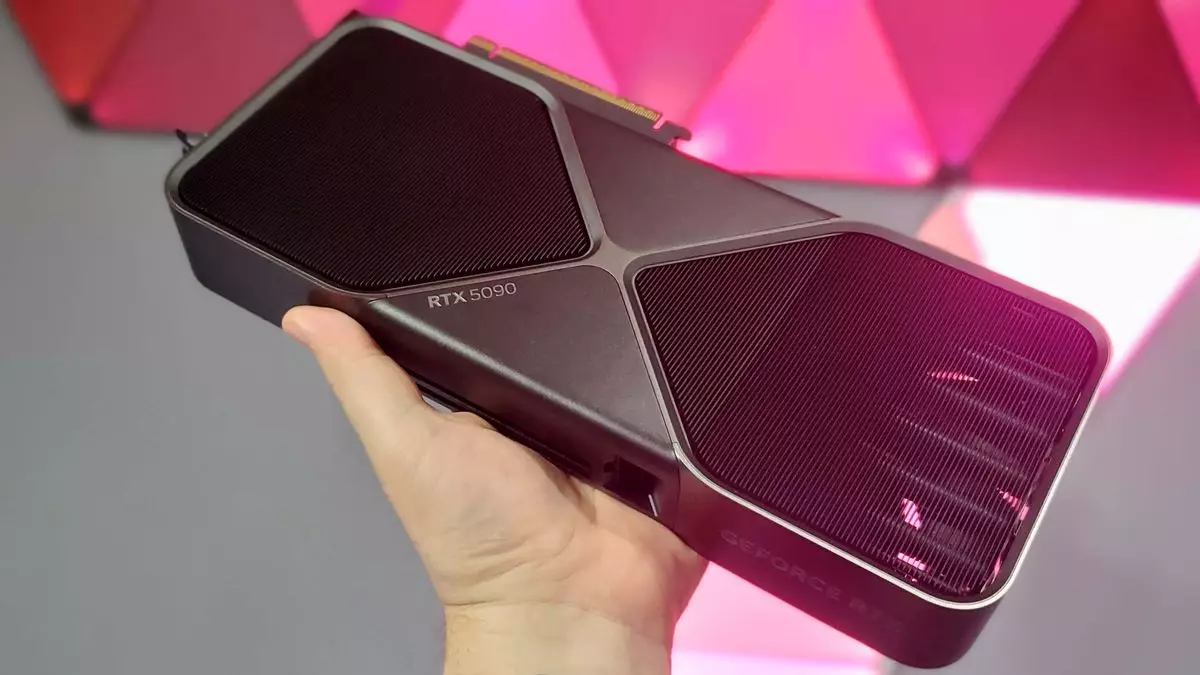The gaming industry stands on the threshold of a monumental leap, primarily fueled by advancements in artificial intelligence (AI). Nvidia’s recent announcement regarding its Neural Shaders SDK is not just a technical upgrade; it marks a pivotal moment that could redefine the entire landscape of video game graphics. With the integration of AI Tensor Cores into DirectX, game developers are now equipped with a powerful tool to enhance their rendering processes, creating an exhilarating prospect for the future of interactive entertainment.
This innovation allows developers to leverage AI capabilities not just to enhance existing graphics, but to transform how those graphics are generated from the ground up. Traditional frame rendering, which has often relied solely on the expertise of skilled programmers to create intricate shader code, is now poised to undergo a dramatic transformation. Training AI models on game data and shader code will enable these systems to predict and generate visual outputs, potentially leading to a more efficient and visually stunning gaming experience.
Elevating Rendering to New Heights
AI’s entry into the graphics rendering pipeline opens avenues that were previously mere speculation. As Nvidia elucidates, the goal is to have game engines communicate the essential qualities of in-game elements—like object dynamics and environmental features—while AI fills in the artistic details. The sheer ambition of this endeavor is staggering; it presents an opportunity for developers to create lifelike graphics that dynamically adapt to player interactions, all while reducing the complexity involved in shader coding.
The core of this transformation lies in the AI’s ability to learn from data, refining its understanding of rendering nuances. This is not simply an extension of traditional techniques but rather a fundamental rethinking of how game graphics are conceptualized and executed. As AI begins to step into the role traditionally held by programmers, the creative potential for artists and developers alike could be unleashed in unprecedented ways.
Skepticism Meets Hope
Naturally, the introduction of AI into any field provokes skepticism, particularly in an industry that has witnessed both triumphs and disappointments associated with technology. As a gamer and a writer, I find myself caught in a whirlwind of conflicting emotions regarding this AI revolution. Historical examples—such as the initial backlash against Nvidia’s DLSS 3 frame generation—have fostered a sense of caution. Initially deemed flawed, such technology has evolved significantly, showcasing that with time and updates, even the most criticized tools can become invaluable assets.
However, navigating the balance between realism and the uncanny valley remains an ever-present challenge. The idea that AI can replicate human artistic nuance raises questions: Will the end results maintain the emotional depth that traditional rendering achieves? Or might they risk feeling synthetic, devoid of the character that often defines the artistic experience of gaming?
Yet, as I reflect on the progress we’ve witnessed in AI-based rendering, I can’t help but hold onto a thread of optimism. The current advancements may pave the way for innovative solutions to persistent graphical challenges. AI’s capability to process vast amounts of data quickly could help mitigate issues like texture pop-ins or lighting inconsistencies that have plagued some games for years.
The Road Ahead: A Balance of Innovation and Tradition
The impending rollout of neural shaders presents a unique crossroads for game developers. The integration of this technology must be approached with care, balancing the promise of AI-enhanced graphics with the tried-and-true methods that have shaped the industry. This becomes all the more crucial for independent developers, who may not have the resources to fully embrace AI without compromising their artistic vision.
Ultimately, the potential for dramatic enhancements in visual fidelity will certainly be enticing for larger studios with the budget to invest. They are likely to push the boundaries of what’s possible, leading to games that are not only visually stunning but also rich in detail and narrative depth.
The future of gaming graphics is not just about technological innovation; it’s about enhancing the experience for players while retaining the art and creativity that make video games unique. As we prepare to see what the future holds, one thing is clear: a new chapter in gaming is on the horizon, driven by AI technology that invites us to dream bigger.

